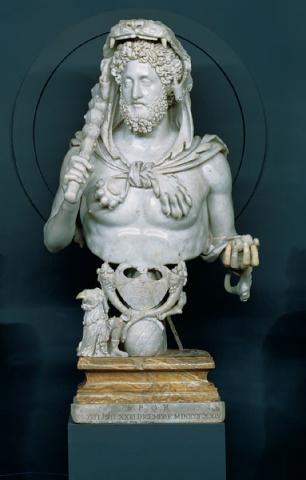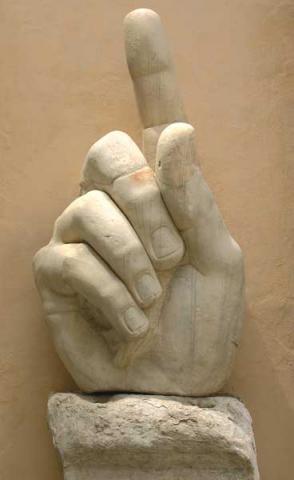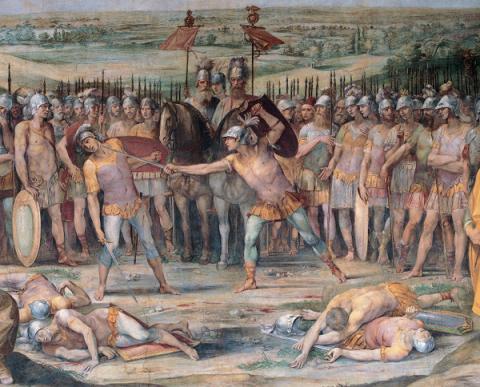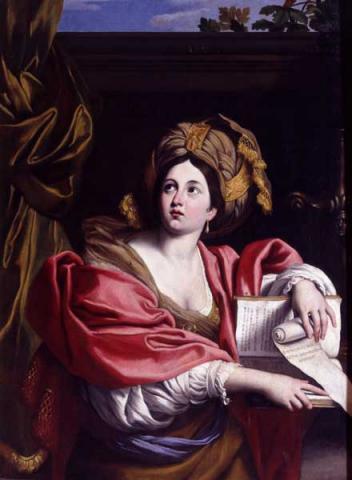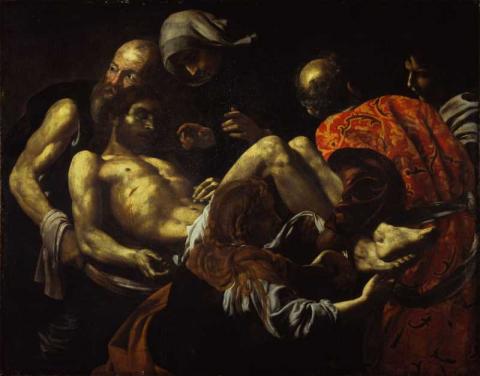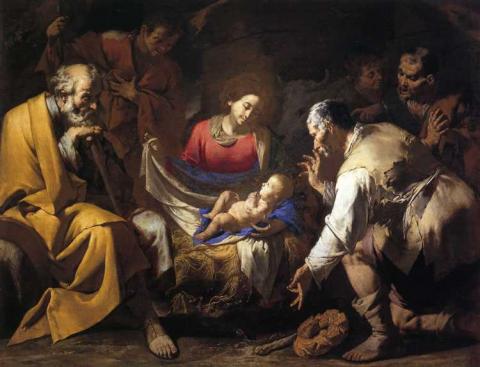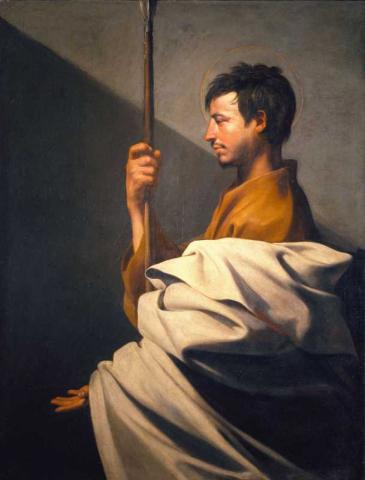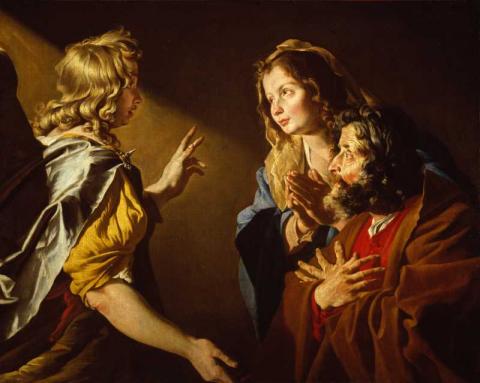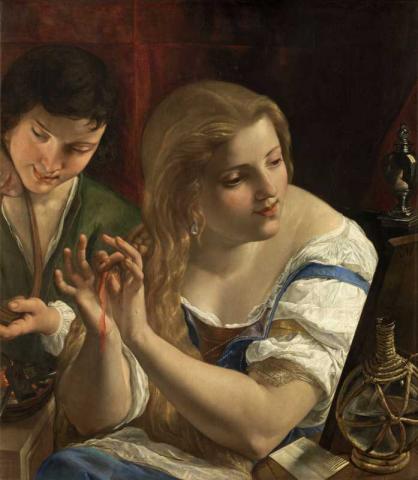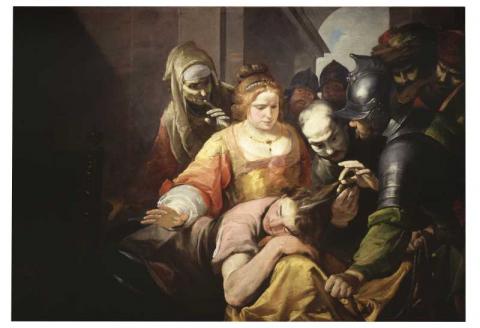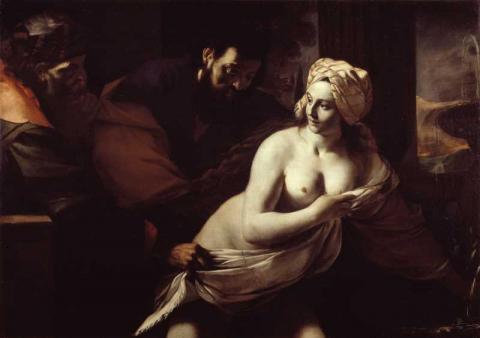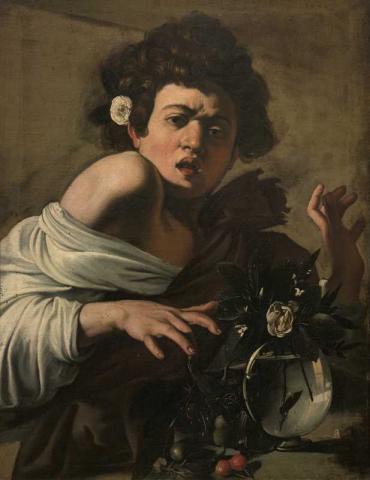The time of Caravaggio
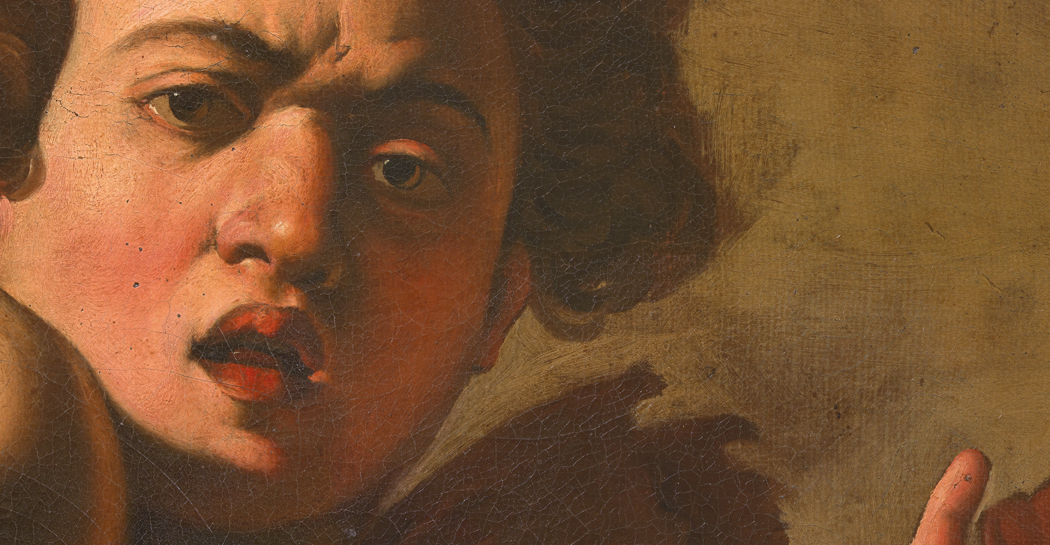
On display the famous “Boy bitten by a green lizard” by Caravaggio and over forty paintings by the artists who in the seventeenth century experienced the influence of his figurative revolution to varying degrees.
The exhibition, curated by the scientific director of the Longhi Foundation Maria Cristina Bandera, is dedicated to the collection of the Caravaggesque paintings of the great art historian and collector Roberto Longhi (Alba 1890 - Florence 1970), whose fiftieth anniversary of death falls in 2020. In his Florentine home, Villa Il Tasso, today the headquarters of the Foundation named after him, he collected a considerable number of works by the masters of all eras he had the opportunity to research. Among these, the works of Caravaggio and his followers undoubtedly represent the most relevant and significant nucleus. The art historian devoted himself to the study of Caravaggio, at the time one of the "lesser-known painters of Italian art", starting from his dissertation, discussed with Pietro Toesca, at the University of Turin in 1911. A pioneering choice however demonstrating how the young Longhi immediately realized how to recognize the revolutionary significance of Merisi's painting, so as to understand him as the first painter of the Modern Age.
BOY BITTEN BY A GREEN LIZARD BY CARAVAGGIO
The work, which dates back to the beginning of Caravaggio's stay in Rome and can be dated around 1596-1597, firstly strikes for the yield of the sudden release due to physical pain and surprise, expressed in the contraction of the boy's facial muscles and in the contortion of his shoulder. Besides it strikes even for the "diligence" the painter had in making the piece of still life with a transparent carafe and flowers, as already underlined by Giovanni Baglione in 1642.
In the introductory room, dedicated to the figure of Roberto Longhi and to the Foundation he established, there is a charcoal drawing of the only figure of the boy, taken from Roberto Longhi himself, who affixed his signature and the date 1930. It is a d'après, from the almost natural size sheet, which demonstrates both the art historian's ability as a draftsman, and even more attests to his perfect understanding of the luminous organization of the painting he had before his eyes.
PAINTINGS AND ARTISTS ON DISPLAY
Below are paintings by artists influenced by his figurative revolution throughout the seventeenth century. Among these it is possible to admire three paintings by Carlo Saraceni; ”The Annunciation Angel” by Guglielmo Caccia known as Il Moncalvo; “The Penitent Mary Magdalene” by Domenico Fetti; the splendid “Coronation of Thorns” by Pier Francesco Mazzucchelli, called “The Morazzone”, the “Allegory of Vanity”, one of the most significant works by Angelo Caroselli.
Four tablets by Lorenzo Lotto and two paintings by Battista del Moro and Bartolomeo Passarotti open the exhibition path with the aim of representing the artistic climate of the Lombard and Venetian Mannerism Caravaggio was formed in. On display, “The boy who cleans a fruit”, an ancient copy by Caravaggio, which Longhi considered a "relic", so much as to expose it to the epochal Festival of the Palazzo Reale in Milan in 1951.
Among the great masterpieces of the first Caravaggism there are also five paintings depicting the “Apostles” of the young Jusepe de Ribera and the “Deposition of Christ” by Battistello Caracciolo, among the first Neapolitan followers of Caravaggio.
The “Denial of Peter” is then the great masterpiece of Valentin de Boulogne, recently exhibited at the Metropolitan Museum of Art in New York and the Louvre Museum in Paris, whose setting is a precise reference to the famous “Vocation of San Matteo” di Caravaggio, in the church of San Luigi dei Francesi in Rome. Flemish and Dutch artists such as Gerrit van Honthorst, Dirck van Baburen and especially Matthias Stom are also present with important works.
Also noteworthy are the works of two painters of uncertain identity, known as “Master of the Emmaus from Pau” and “Master of the Annunciation to the shepherds”, as well as two small but significant landscapes by Viviano Codazzi and Filippo Napoletano.
Among other great artists the exhibition points out the Genoese painters Bernardo Strozzi, Giovanni Andrea De Ferrari and Gioacchino Assereto. And also: Andrea Vaccaro, Giovanni Antonio Molineri, Giuseppe Caletti, Carlo Ceresa, Pietro Vecchia, Francesco Cairo and Monsù Bernardo.
Two more masterpieces by Mattia Preti - the artist who more than any other contributed to maintaining the vitality of the Caravaggesque tradition until the end of the seventeenth century – togheter with two beautiful paintings by Giacinto Brandi ending the exhibition path refer to a more advanced season.
The exhibition makes available a catalogue created by Marsilio Editori presenting the works of Caravaggio and his followers in the Longhi Collection, furnished with a notepaper and a short biography of the artists.
Information
Reopening from April 26, 2021
to May 2, 2021
Every day 9.30-19.30
Last admission one hour before closing
Closed:
1 May
Before planning the visit, CONSULT THE NOTICES
See the page: Tickets and videoguides
Free admission to MIC card holders
Call. 060608 (every day 9.00 - 19.00)
Catalogo
Press Room
Gallery
Documents
Eventi correlati
1007868



























